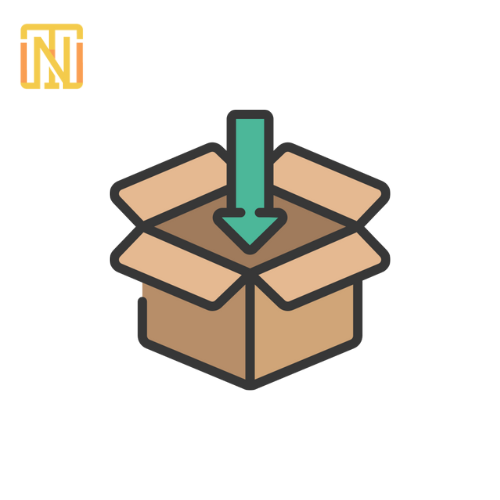
10 Tips for Wholesale Inventory Management in 2025
Introduction
Wholesale inventory management in 2025 isn't only about keeping the shelves stocked — it means being quick, efficient, and adaptable in a fast-moving environment. Supply chains are evolving, and customer expectations are high, so wholesale inventory management needs to be mastered now more than ever for distributors and wholesale businesses of all types.
For example, the world's wholesaling market is of utmost importance to moving and managing products from the manufacturer to the seller.
Wholesale distributors either facilitate the sale of goods between wholesalers or serve as a link between wholesalers and retailers.
They also handle non-consumer goods like raw materials and production inputs. Such colossal flowing goods are held up by logistics, warehousing, and transportation key players, and all of them depend on proper, real-time wholesale inventory management systems to get their goods flowing.
Here in the U.S., total goods sales by merchant wholesalers amounted to a staggering $9.7 trillion - enough to let one realize how massive and necessary this industry is.
Under such high stakes, efficiency is of foremost importance.
No matter if you are scaling up or fine-tuning your existing setup, adopting the right wholesale inventory software and best practices in distribution inventory management software can prove to be the winning combination.
In this guide, we will introduce you to 10 Tips for Wholesale Inventory Management in 2025. From smarter stock tracking to leveraging inventory management software for wholesale, these tips are designed to help you take full control of your operations and future-proof your business.
Let's get down to it!
Top 10 Tips for Wholesale Inventory Management in 2025
1. Analyze and Construct Forecasts
Data is one of the most highly coveted tools in the wholesale management of an inventory. By tapping into analytics and building smart forecasting strategies, wholesale managers can take the guessing out of stock planning and actually make informed decisions without second-guessing.
A wholesale inventory management system should also help you analyze your current levels of stock, identify trends, and then forecast your future demand. It's more than knowing what's on the shelves; it's knowing why it's there, how quickly it moves, and what you should expect next.
Inventory analytics can tell you:
- Shrinkage from theft, damage, or human error.
- All carrying costs as they relate to inventory-purchase price, storage, insurance, and handling.
- Turnover ratios, which tell you how often you're selling and replacing your inventory.
- Any backorders or missed sales-representing demand that you haven't met.
All these insights will be fed right into your forecasting models to enable the identification of future buying behavior and to plan purchases more accurately. This translates to a reduction in stockouts and excess inventory, and tighter cash flow management.
Moreover, pricing strategies can adjust according to data-driven insights. Keeping up to date with industry trends in pricing by competitors allows automatic adjustment to maintain competition without disturbing margins.
Read Also: How to Start Selling Wholesale on Amazon in 2025
2. Perform Regular Stock Audits
Regular audits are essential for maintaining accurate wholesale inventories. They help you understand what’s really in your warehouse—and what’s going missing.
Stock audits help with:
- Identifying discrepancies (like shrinkage or human error) between actual stock and your wholesale inventory management system records.
- Calculating the true value of your inventory and associated carrying costs.
- Making better financial and procurement decisions based on accurate data.
When paired with robust inventory management software for wholesale, audits give you a real-time pulse on your operations and help you address issues before they impact the bottom line.
3. Categorize Your Stock
Organizing your inventory into logical groups makes your entire warehouse operation smoother and smarter.
You can categorize by:
- Value: High-, medium-, and low-value items.
- Movement: Fast-, medium-, and slow-moving products.
- Type: By product category, brand, or usage.
Benefits of categorization:
- Easier and more efficient stock counts.
- Prioritized safety and security for high-value items.
- Customizable pricing adjustments based on item category.
Most modern wholesale inventory software or wholesale management systems allow you to adjust inventory levels or prices by category, saving you significant manual effort.
4. Implement Stock-Ordering Strategies
Keeping the right stock levels is a delicate balance. Too much, and you tie up capital. Too little, and you risk stockouts.
To optimize ordering:
- Set minimum and maximum stock levels for each item.
- Use conservative safety stock levels to protect against sudden demand spikes.
- Enable system notifications to alert staff when to reorder or hold off.
If you’re not yet using wholesale inventory management systems, consider implementing a two-bin system for manual tracking—when one bin runs out, you reorder while the second bin covers the interim.
Efficient ordering is a hallmark of good distribution inventory management software—automate where possible for maximum impact.
5. Collaborate with Marketing and Sales
Inventory doesn’t exist in a vacuum. Promotions and sales campaigns directly impact product demand, so stay connected.
Collaboration benefits:
- Align inventory planning with upcoming promotions.
- Prevent overstocking or understocking during campaigns.
- Use real-time data from sales teams to guide procurement decisions.
Create regular check-ins between the inventory, sales, and marketing departments. Integrated wholesale order management systems can further improve communication across departments.
6. Optimize Your Inventory Processes
Efficient processes reduce costs and improve speed. This applies to everything from ordering and receiving stock to picking, packing, and shipping.
Automation tips:
- Integrate wholesale management software with IoT-enabled devices like scanners, barcode readers, and RFID systems.
- Use conveyors, robotic picking systems, and drones to speed up internal movement and reduce labor dependency.
- Sync your wholesale inventory management system with warehouse hardware for seamless control.
While the setup may require investment, the long-term savings and reduced human error make it worthwhile.
7. Sell Stock at Discounted Prices
When items don’t move, it’s time to get creative. Don’t let slow-movers sit and drain value—turn them into opportunities.
Steps to take:
- Inform sales and marketing about stagnant stock.
- Offer discounted pricing or bundle deals.
- Incentivize sales reps to promote these items.
With the right wholesale inventory software, you can flag slow-moving items early and adjust your strategy before they become dead stock.
8. Get Rid of Slow-Moving or Obsolete Stock
Holding onto dead stock eats into your bottom line and takes up precious space.
Here’s how to handle it:
- Bundle products with fast-movers (e.g., bundle unsold drinkware with popular summer items).
- Remarket to a new customer base at a lower price point.
- Donate to a charity for a potential tax benefit.
- Return to suppliers when possible.
Many wholesale inventory management systems support bundling features, allowing you to create a new SKU for a grouped product while automatically updating your wholesale inventories report.
9. Maintain Supply Chain Awareness
Global and local disruptions can impact your warehouse in unexpected ways. Having visibility over your supply chain is key to staying prepared.
To stay informed:
- Monitor real-time supply chain data.
- Know your average order fulfillment cost by factoring in:
- Storage and warehousing.
- Labor costs for picking and packing.
- Shipping, admin, and returns processing.
Advanced wholesale management software and distribution inventory management software can help you track these metrics and alert you when costs are rising.
8. Optimize Your Logistics Processes
Logistics play a critical role in the success of any wholesale inventory management strategy. Efficient logistics mean quicker deliveries, better customer experiences, and reduced operating costs.
Ways to improve logistics:
- Use vehicle and delivery tracking software.
- Invest in route optimization tools to reduce fuel costs and delivery times.
- Automate last-mile delivery processes to handle delays, address errors, and update customers in real-time.
Tech-powered wholesale management tools that include integrated logistics support can turn complex delivery challenges into smooth, manageable workflows.
Read Also: Where to Find Wholesale Suppliers for Amazon FBA Products
Vehicle Maintenance and Monitoring
In wholesale inventory management, the crux of operations lies in the logistics, and it starts at keeping the trucks in their best conditions. A breakdown can be quite the costly disruption: it delays orders, upsets customers, and sends bad vibes out across your entire wholesale order management system.
Regular maintenance and smart monitoring will spare you all that hassle. With advanced tracking and mobile technologies, you can have complete visibility of your fleet, minimize risk, and enhance delivery efficiency.
Significance of Vehicle Monitoring
Advanced vehicle tracking systems confer a plethora of advantages:
- Know where the vehicles are in real time to better coordinate deliveries along their routes.
- Monitor vehicle performance and fuel consumption for effective operational improvements.
- Monitor operator driving behavior in regards to speeding, route adherence, and rest breaks to decrease the risk of accidents related to fatigue or unsafe practices.
- Communication tools also provide a means for drivers to connect with customers and dispatch, creating customer satisfaction by providing real-time updates.
How Tracking Devices Support Wholesale Operations
Vehicle tracking systems can be integrated directly with your warehouse management system (WMS) and your enterprise resource planning (ERP) platform, enabling you to:
- Provide performance reports that detail fleet performance and maintenance planning.
- Improve driver safety with the monitoring of driving hours, rest periods, and route efficiency.
- Anticipate traffic or weather-related delays and proactively reroute deliveries.
Effective Route Planning for Wholesale Deliveries
Smart routing saves fuel, enhances delivery time, and aids the entire wholesale inventory management system. Here is how:
- Shortest, most efficient routing saves time and reduces operational costs.
- Fuel-efficient routing is one that also circumvents steep slopes, bad road conditions, and high traffic areas.
- Matching truck and cargo ensures that inventory allocation is made based on the vehicle's carrying capacity.
- Delivery planning on a territory basis helps to avoid repeat trips and missed stops.
Last-Mile Technology Adoption
Last-mile delivery is often the most complex, most critical step along the entire wholesale distribution process. When properly assisted with technology, such last-mile delivery can be fully optimized.
- Use last-mile delivery software for real-time communication among customers, drivers, and dispatchers.
- Give drivers mobile apps with which to track, update, and capture proof of delivery (POD).
- Directly integrate POD photographs and confirmations of delivery into your wholesale inventory software or B2B platform.
The combination of proactive vehicle maintenance and smart logistics tech will work in tandem to boost delivery reliability and cut costs and enhance the overall customer experience for a wholesale business.
Conclusion
Effective wholesale inventory management is the underlying foundation of a successful common distribution business in 2025.
By following the techniques from smart forecasting, stock counts, inventory control, logistical efficiencies, and technological tools, you can reduce costs, increase precision, and enhance the customer experience.
Whether you utilize inventory management software for wholesale purposes or are using wholesale inventory management, you can stay in front of the operations and learn by staying proactive and knowledgeable.
FAQs
1. What is wholesale inventory management?
Wholesale inventory management refers to the procedures involved in tracking stock, determining stock levels, stocking products, and controlling product stock in a wholesale distribution operation. Inventory management runs from the receipt of goods to the customer's order being filled as efficiently as possible.
2. Why is forecasting inventory critical in wholesale?
Forecasting inventory in wholesale is paramount. Forecasts provide the wholesaler with the ability to predict and prepare for future demand, prevent over-stocking and stocking out, and make informed purchasing decisions that help save time and money.
3. How often should I do a stock audit?
Regular stock audits are highly recommended, whether monthly, quarterly, or bi-annually, to maintain accuracy, and help reduce shrinkage, and make sure that the numbers in your wholesale inventory management provide an accurate account of real-time stock levels.
4. Can inventory management software assist with order fulfillment?
Most modern inventory management software for wholesale includes an order management option that automates the reordering process, product shipping, and order fulfillment process, in conjunction with your wholesale inventory management system.
5. What is logistics in inventory management?
Logistics is the process of making sure that products move efficiently from the warehouse location to the customer. Logistics combined with vehicle tracking and route planning tools, enhance the speed of delivery and improved reliability.




